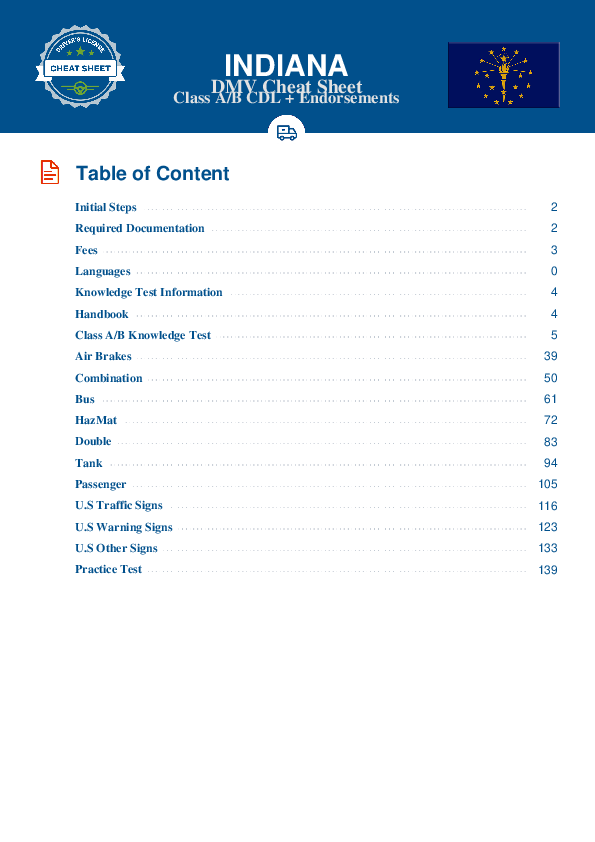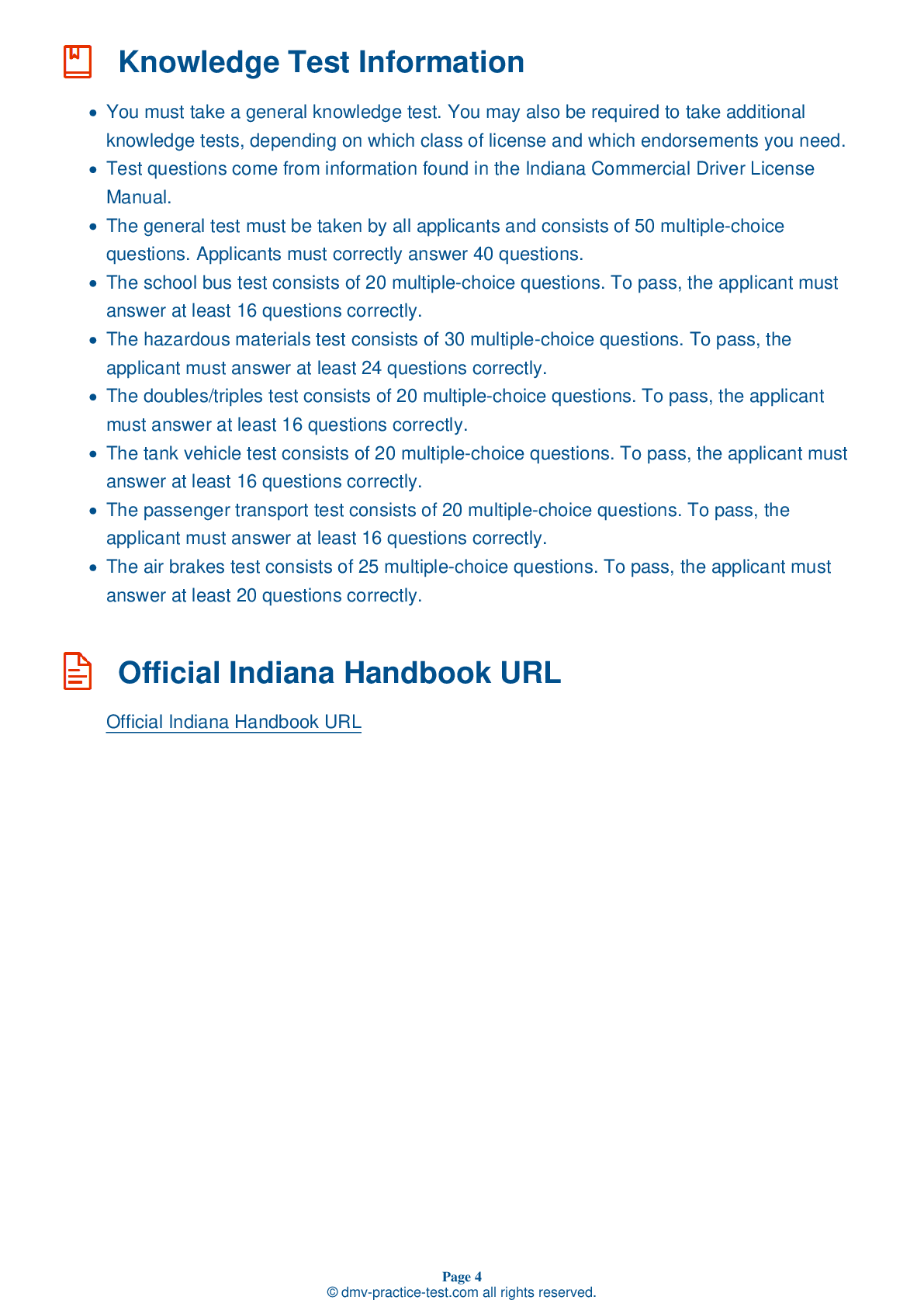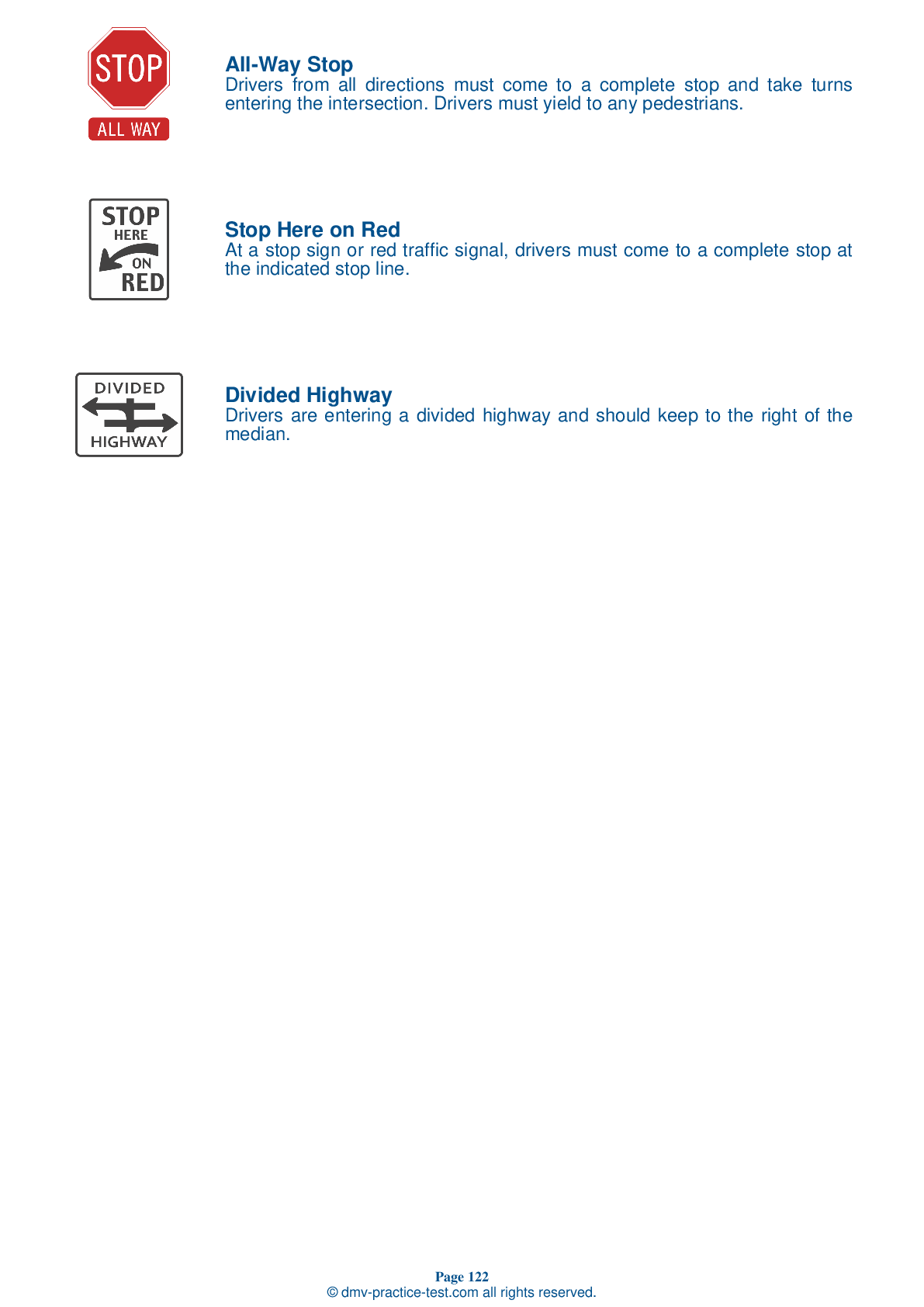Class B Driving Test | Indiana 2025 #2 Page 7 of 7
Train for FREE online with our Indiana class B license test. The official exam test consists of several obligatory parts, with all of them checking your knowledge of different blocks of road rules. If you need to obtain a IN CDL class B permit in 2025, practice as much as possible. Free sample tests published on our website will help you check and improve your knowledge and boost your grades. Please bear in mind that CDL class B requirements may vary from state to state.
43 . Emergency brakes are:
All trucks, truck tractors, and buses must be equipped with emergency brakes and parking brakes.
44 . Driving in extremely hot weather:
Air expands as it gets warmer, so tire pressure can rise to a dangerously high level in very hot weather. To prevent an engine from overheating in hot weather, it is important to confirm that it contains enough oil. Verify that there is enough water and antifreeze in your vehicle's cooling system.
45 . How many daily hours of sleep does an adult need to maintain alertness?
Being properly rested is essential to the safe operation of a CMV. To maintain alertness, most people need eight to nine hours of sleep per night.
46 . Which of the following is not a possible cause of a fire?
Possible causes of vehicle fires include spilled fuel or improper use of flares following an crash; under-inflated tires or dual tires that touch; short circuits in the electrical system; smoking around fuel; improper fueling or loose fuel connections; and carrying cargo that is flammable, improperly sealed or loaded, or poorly ventilated.
47 . When driving downhill, you should:
Before starting down a hill, you should shift into a lower gear. This will put your vehicle at a speed that you can control without having to use your brakes too much.
48 . If unsure if a road is becoming icy, a driver can:
If you think the road surface may be becoming icy, you can check for ice on your vehicle by opening the window and feeling the front of the side mirror, mirror support, or antenna. If ice has formed on any of these items, the road is likely becoming icy as well.
49 . When being approached by a vehicle using bright headlights while driving at night, you can avoid being blinded by the headlights by:
To avoid being blinded by the lights of an oncoming vehicle at night, you can glance to the right edge of the road until the vehicle has passed.
50 . What should you do if your vehicle gets stuck on railroad tracks?
If your vehicle gets stuck on railroad tracks for any reason, you should immediately exit the vehicle and walk away from the tracks. Contact the proper emergency authorities.
See the exact questions that will be on the 2025 Indiana DMV exam.
99.2% of people who use the cheat sheet pass the FIRST TIME
Lillian MCcranie explains how our CDL study guide was helpful in passing the exam and recommends it to everyone.
Cameron tells us how he purchased the CDL exam, and found it to be a useful tool which helped him pass the exam and find a job.



